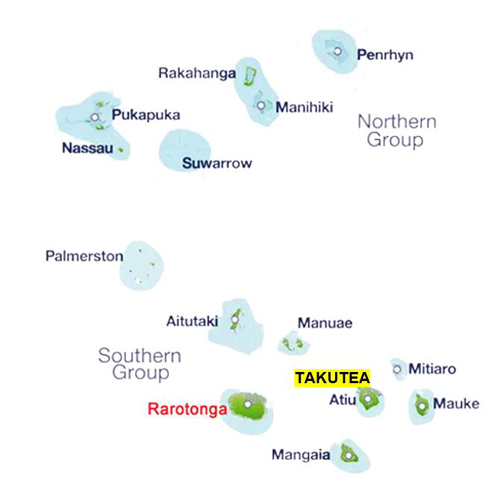A designated wildlife sanctuary
Never permanently populated
Takutea has been declared a "community conserved area" and is designated as a wildlife sanctuary. It's a tiny sandy cay 20 kilometres (12.4 miles) North West of Atiu. It's 6 metres (20 feet) above sea level at the highest point and mostly covered in coconut palms. Thousands of red tailed tropicbirds and red footed boobies nest there and it's one of the most important sea bird breeding grounds in the Pacific region. The island is surrounded by a pristine, unbroken reef and fishing is prohibited within a specified area. The deeper areas off the Takutea reef are habitat for nursing humpback whales
LOCATION: 189 kms/118 mls North East of Rarotonga
ACCESS: Restricted
POPULATION: 0
LAND AREA: 1.3 sq.kms/0,5 sq. mls
GETTING THERE
There is no commercial access. The island is administered by a Trust and written permission is needed to visit even for landowners. Takutea Trustees, the Atiu Trust, the Island Council and the National Environment Service all have to be consulted and approve. The island is only accessible on the leeward side in calm weather because of the unbroken reef around it
LOCATION: 189 kms/118 mls North East of Rarotonga
ACCESS: Restricted
POPULATION: 0
LAND AREA: 1.3 sq.kms/0,5 sq. mls
GETTING THERE
There is no commercial access. The island is administered by a Trust and written permission is needed to visit even for landowners. Takutea Trustees, the Atiu Trust, the Island Council and the National Environment Service all have to be consulted and approve. The island is only accessible on the leeward side in calm weather because of the unbroken reef around it
FACT FILE
- Originally called Areuna
- Sometimes still called Enua-Iti which means small Island
- Captain Cook recorded that name in his journal when he reached the island on 4 April, 1777 and sent boats ashore to collect food
The birds have thrived because Takutea is the only island in the Cooks never to have had a permanent population. Even when some of Captain Cook's crew went ashore nearly 250 years ago, there was no evidence of a permanent settlement, although they found some empty huts
A RARE HARVEST
The island also has an abundance of seafood in its waters and crab on land. Harvesting is rare but in 2023, after much planning, discussions and special permission, Atiu islanders set out on an expedition with strict quotas and an important purpose in mind. Atiu Fishing Club coordinator, Takili Talagi-Tairi said the idea was to teach the young generation not to overharvest in the future. Clams (paua), coconut crabs and crayfish were collected and shared among Atiu residents Photos: Cook Islands News
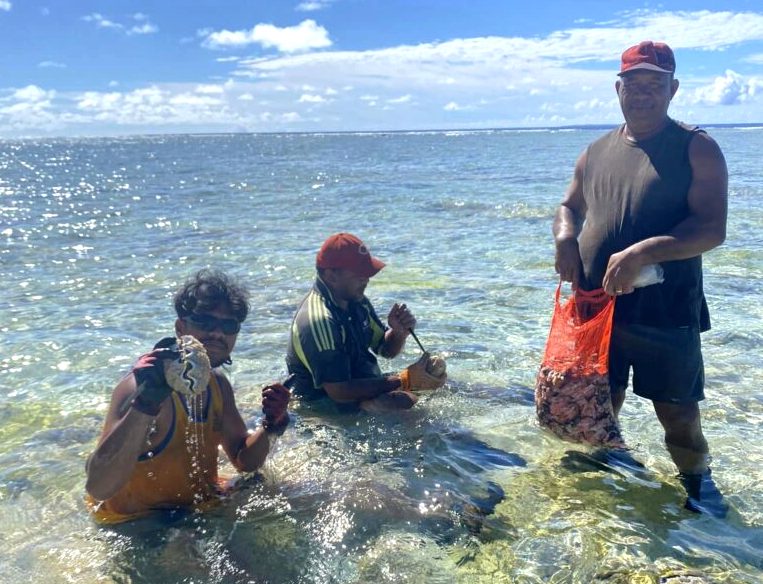
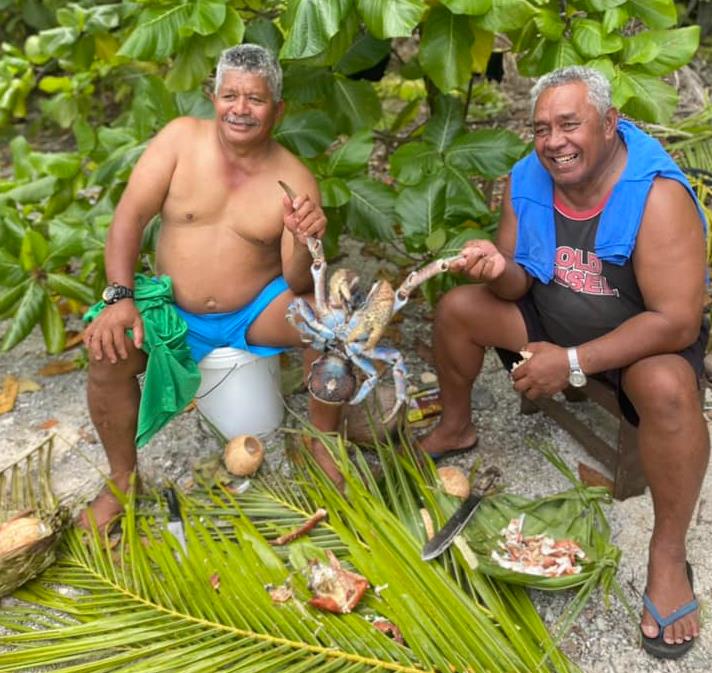
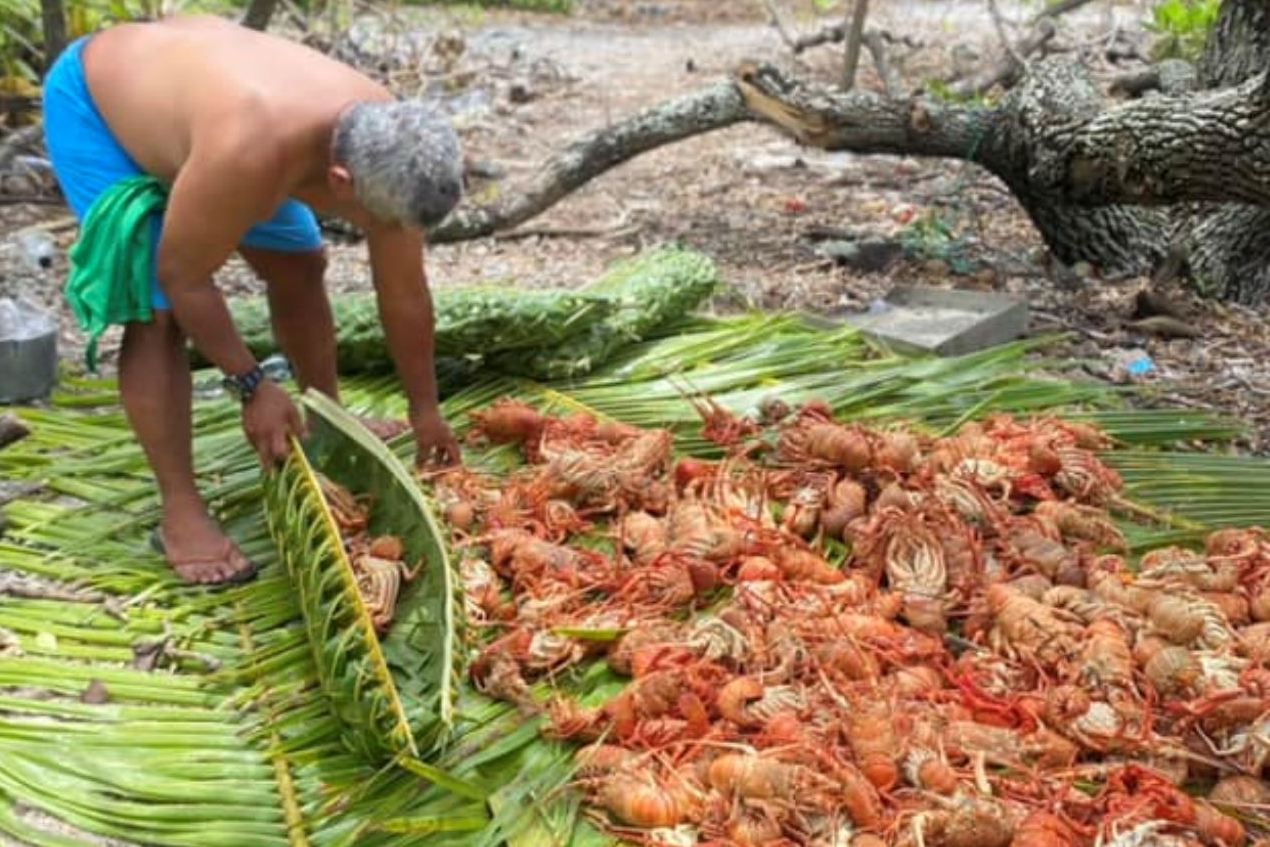
BELOW AND ABOVE
The pristine reef surrounding the island includes features that experienced divers say are seen nowhere else on the planet. Currents converge near the Island, and on the surface of the ocean waves as wide as 400 metres are a surfer's dream according to islanders on neighbouring Atiu. They also enable turtles to find their way safely onto the island to lay their eggs and nurture them.
Many of the photos on this page are courtesy of Atiu's own website which islanders themselves have created
A DIVER'S PARADISE
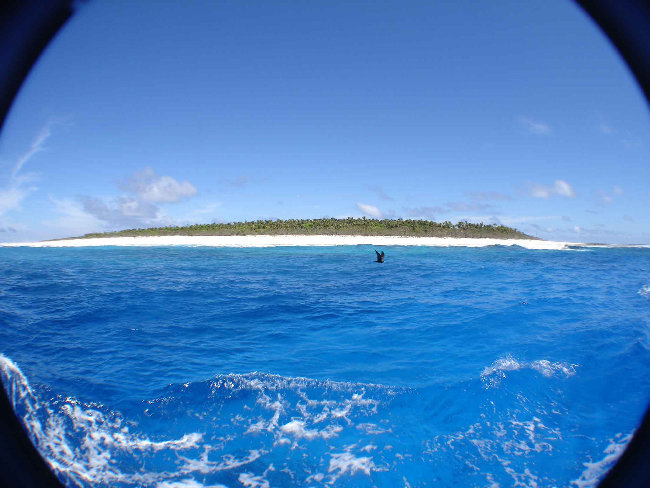
Research scientist and expert diver, Graham Wragg was given speical permission to visit the island and he took away memories to last a lifetime
"I did not sail off the end-of-the-world after all! I found a magical little uninhabited island, where time stands still. Well, I sort of did, anyway.
We went diving at Takutea Wildlife Sanctuary and about fell over backwards within one minute of getting into the water - we had stumbled onto a divers paradise"
Photo: Graham Wragg
PROTECTING PERFECTION
Island leaders on Atiu have signed an agreement with a not-for-profit environmental organisation, designating a 297 acre wildlife sanctuary on Takutea. A five mile restricted fishing zone has been set up around the island and it's illegal to land or fish in that area
The agreement means no changes will be allowed to the natural environment for 20 years. The organisation - SeaCology - have previously funded environmental protection work on Mangaia.
A major programme of work by multiple agencies has further protected the unique environment and its wildlife by completely eradicating invasive rats in 2024. They were preying on bird eggs, destroying vegetation and affecting climate resilience.
